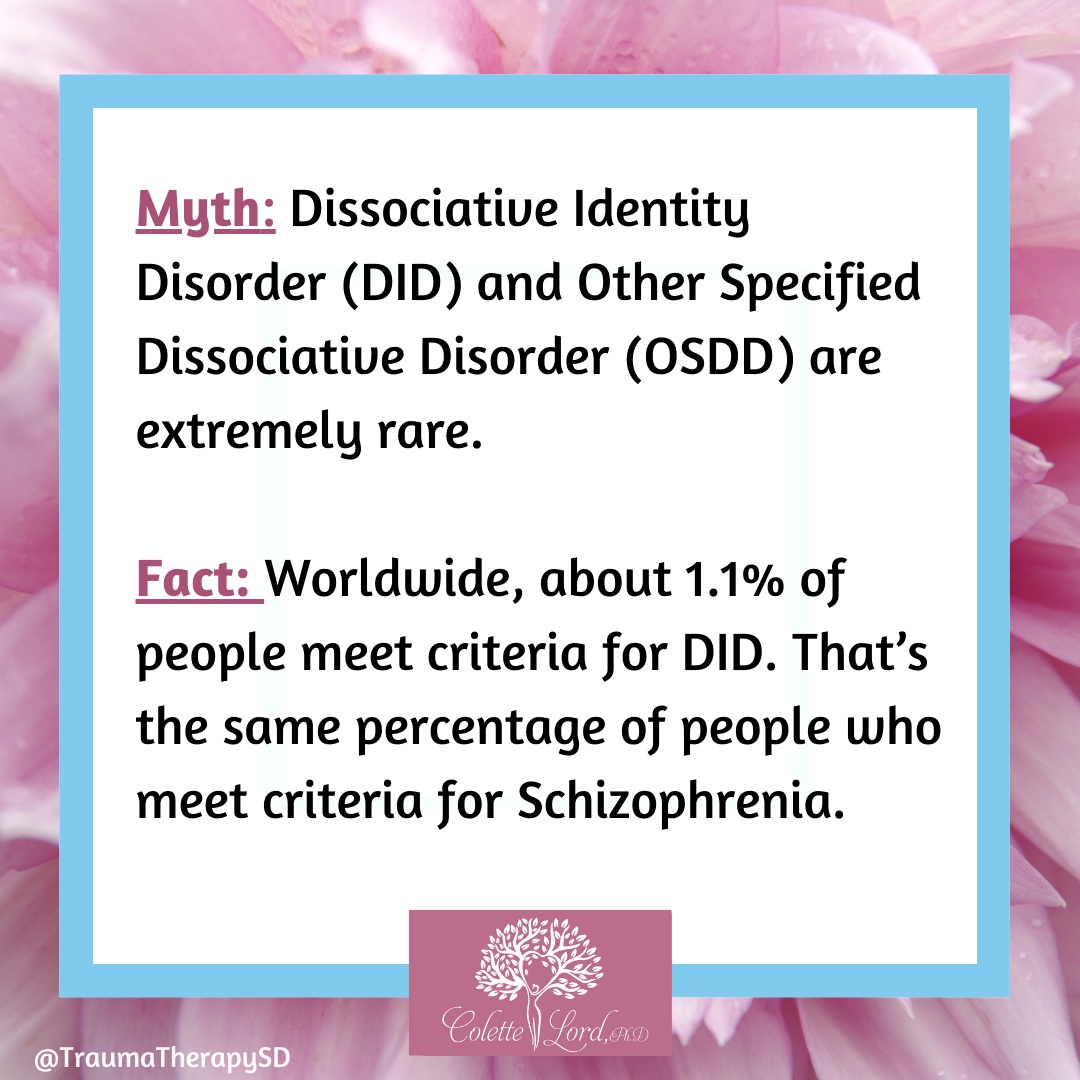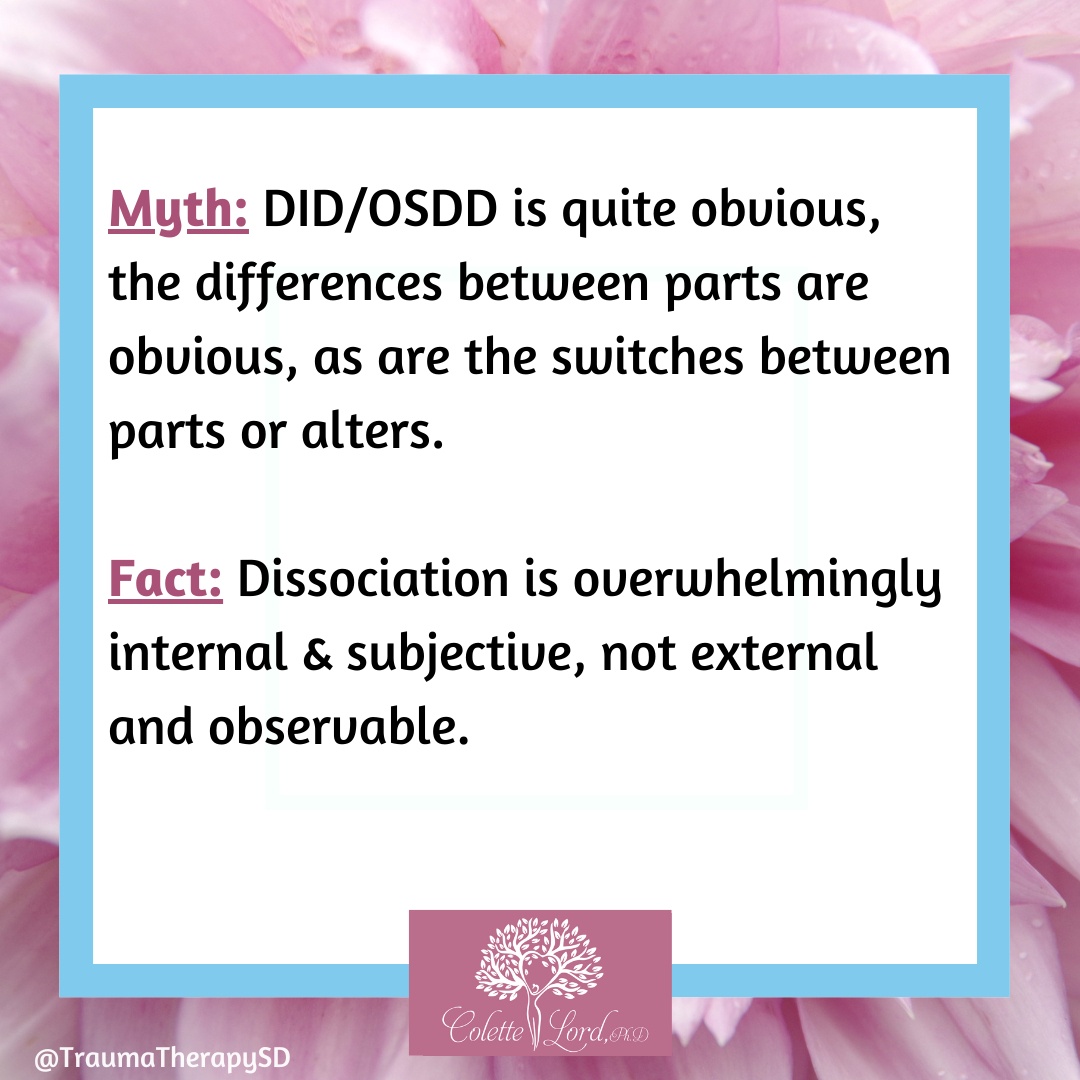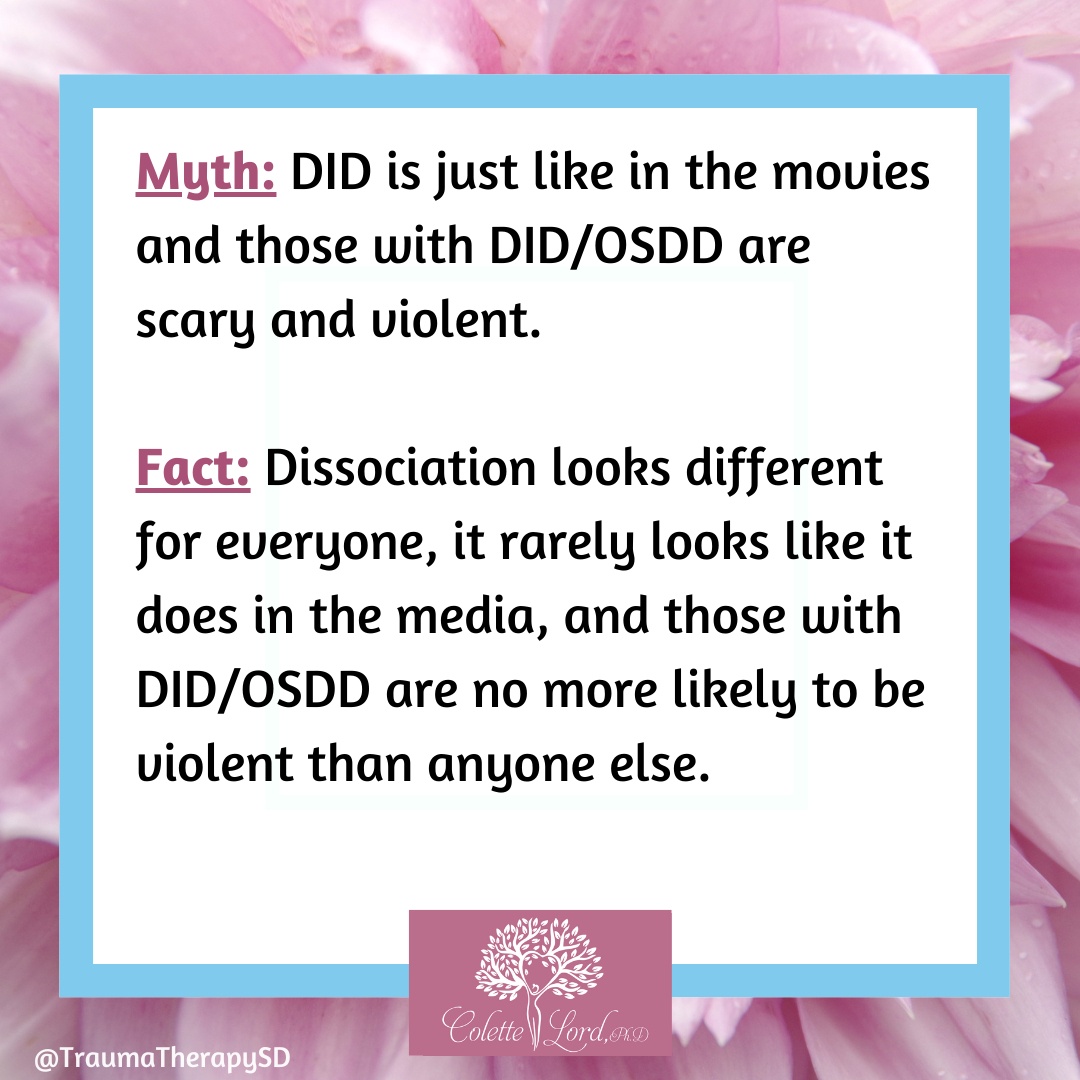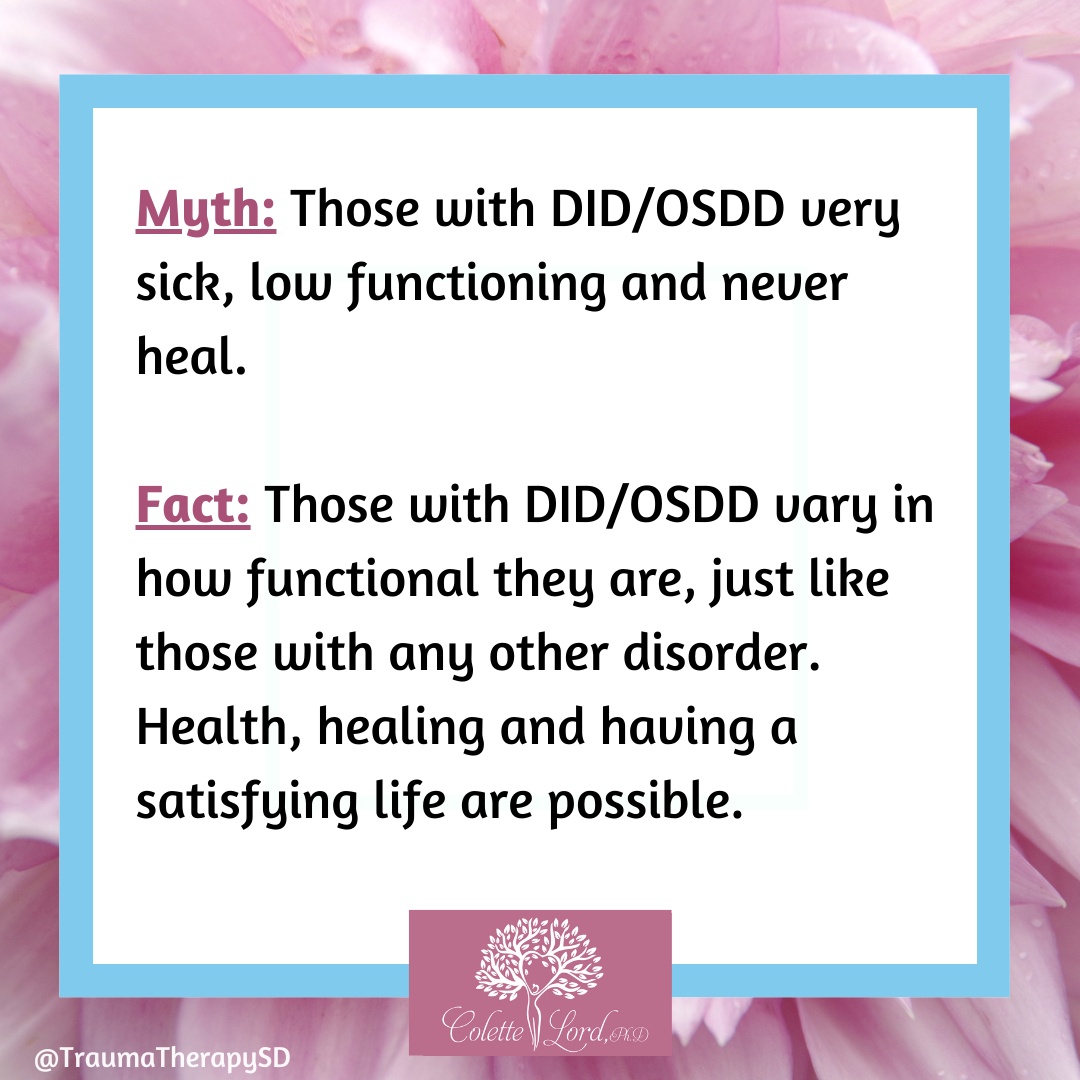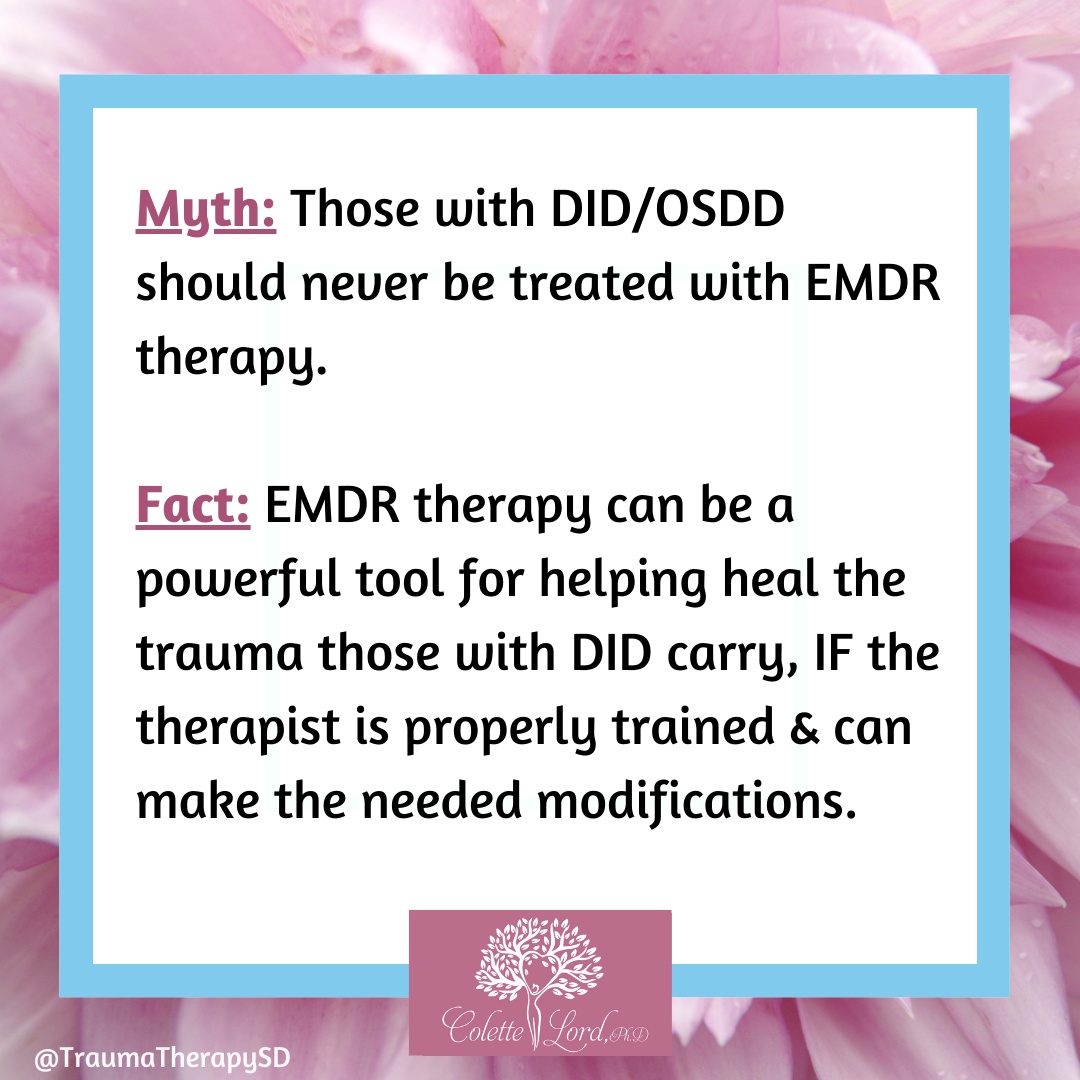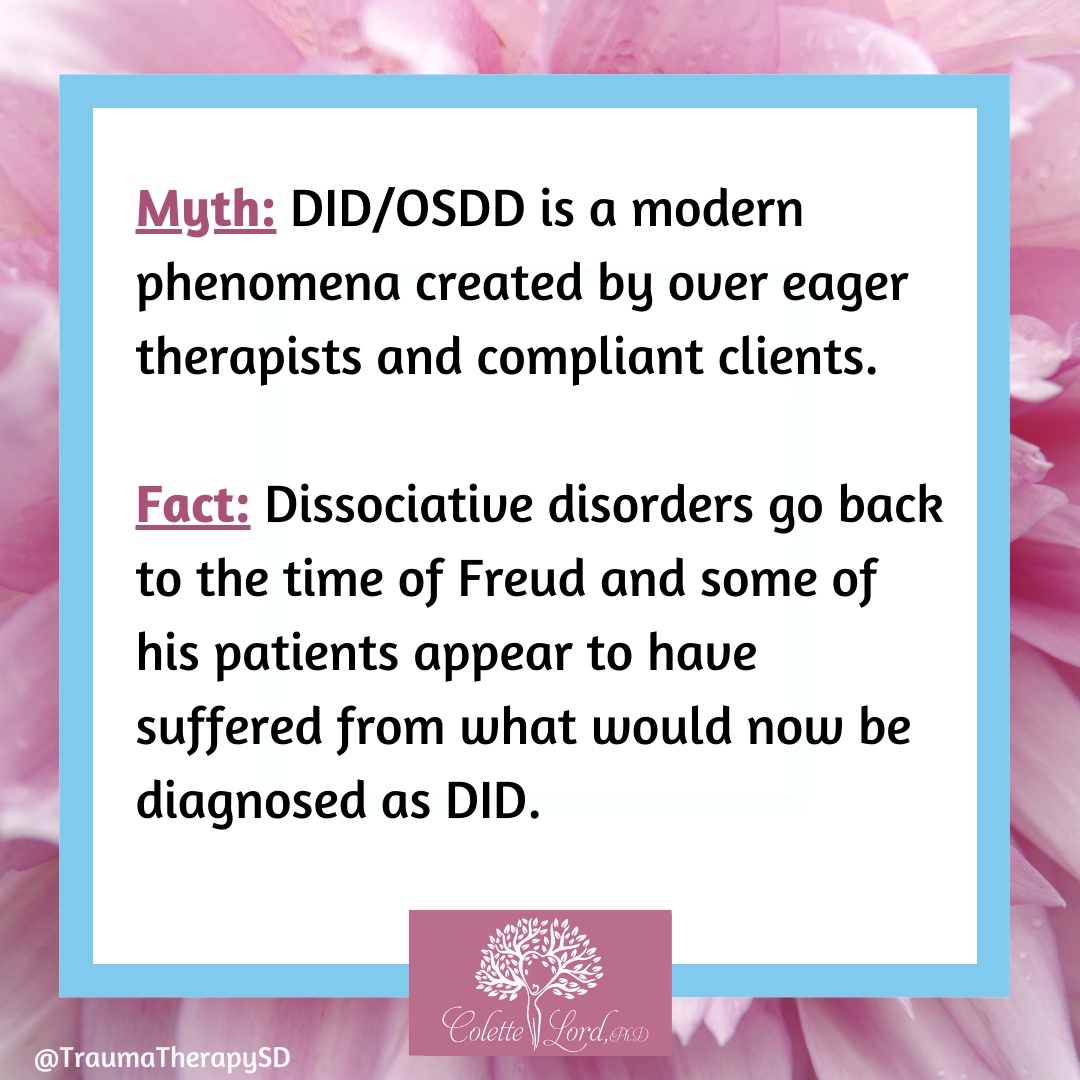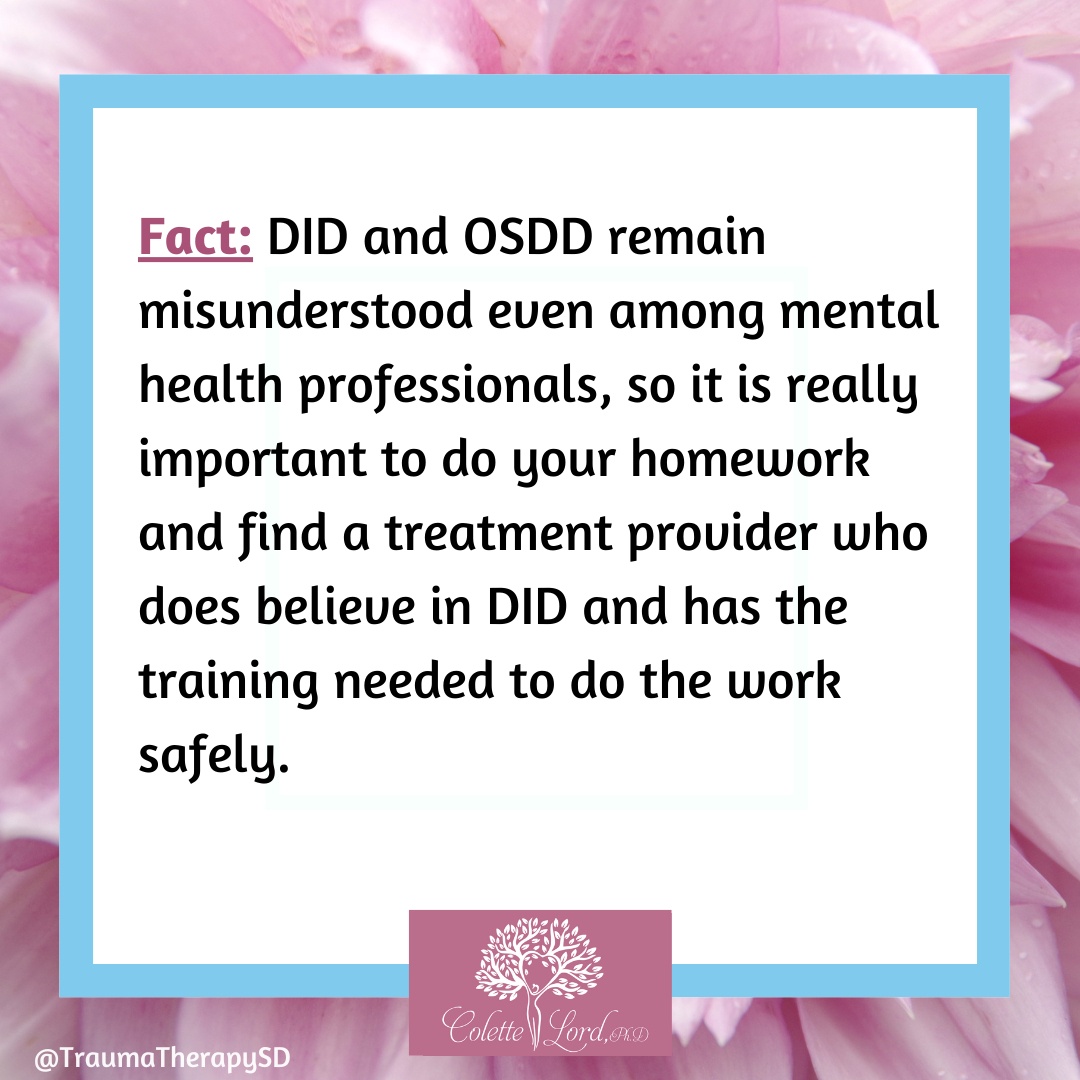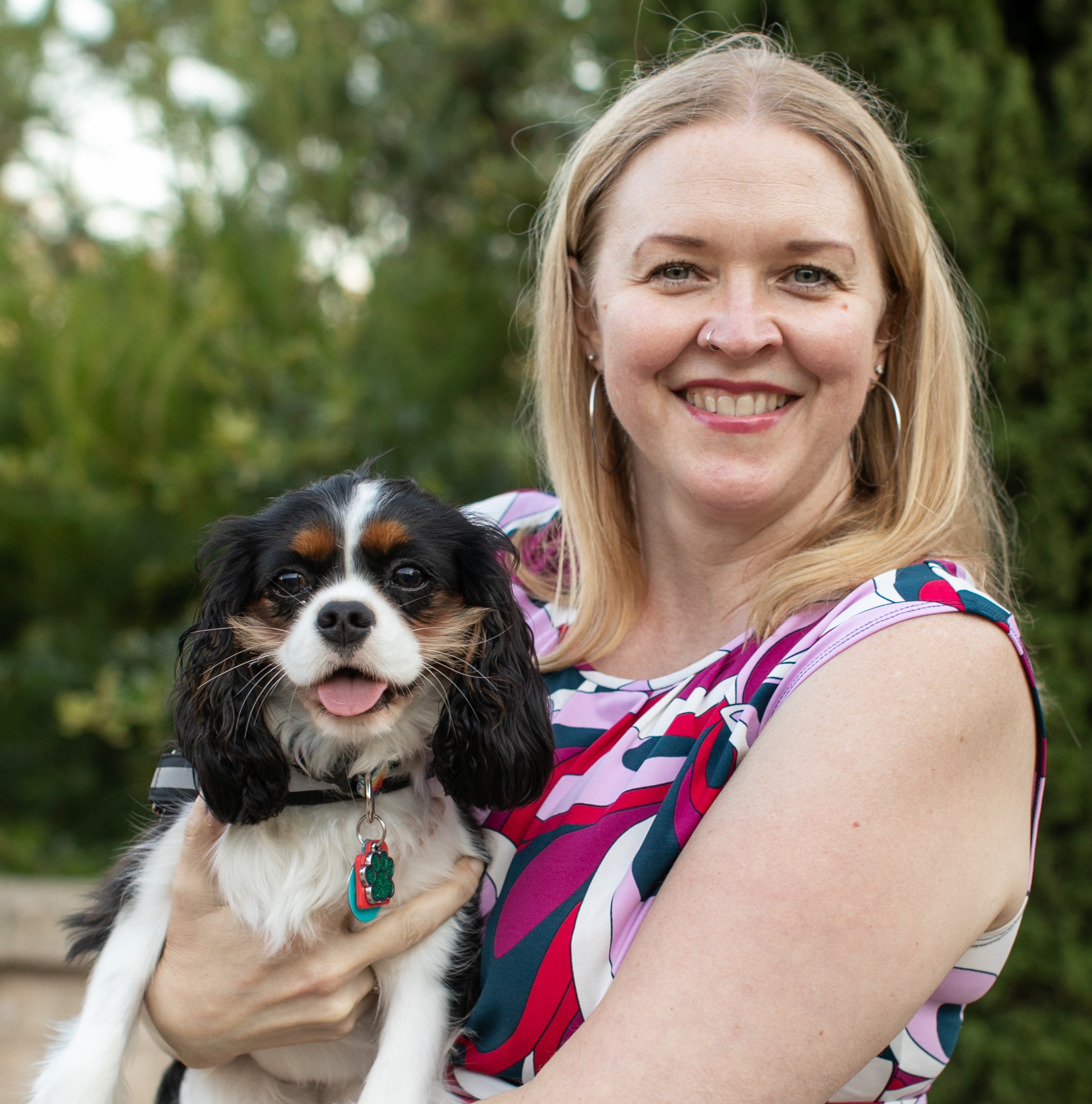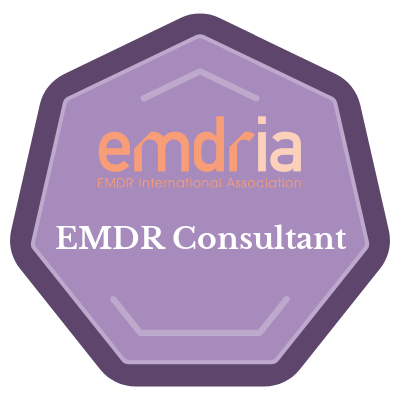DID myths
Myth: Dissociative Identity Disorder (DID) and Other Specified Dissociative Disorder (OSDD) are extremely rare.
Fact: Worldwide, about 1.1% of people meet criteria for DID. That’s the same percentage of people who meet criteria for Schizophrenia.
Myth: DID is made up by the client or the therapist who convinces the client they have DID/OSDD.
Fact: Neuroimaging techniques such as MRIs of the brain can differentiate between ‘normal’ brains and those with DID.
Myth: DID/OSDD is quite obvious, the differences between parts are obvious, as are the switches between parts or alters.
Fact: Dissociation is overwhelmingly internal & subjective, not external and observable.
Myth: DID is just like in the movies and those with DID/OSDD are scary and violent.
Fact: Dissociation looks different for everyone, it rarely looks like it does in the media, and those with DID/OSDD are no more likely to be violent than anyone else.
Myth: DID/OSDD is a modern phenomena created by over eager therapists and compliant clients.
Fact: Dissociative disorders go back to the time of Freud and some of his patients appear to have suffered from what would now be diagnosed as DID.
Myth: DID is evidence of a broken mind and inherent illness.
Fact: DID/OSDD minds are incredibly powerful, creative and resilient. They are result of a brain determined to survive.
Myth: Those with DID/OSDD very sick, low functioning and never heal.
Fact: Those with DID/OSDD vary in how functional they are, just like those with any other disorder. Health, healing and having a satisfying life are possible.
Myth: Those with DID/OSDD should never be treated with EMDR therapy.
Fact: EMDR therapy can be a powerful tool for helping heal the trauma those with DID carry, IF the therapist is properly trained & can make the needed modifications.
Fact: DID and OSDD remain misunderstood even among mental health professionals, so it is really important to do your homework and find a treatment provider who does believe in DID and has the training needed to do the work safely.

